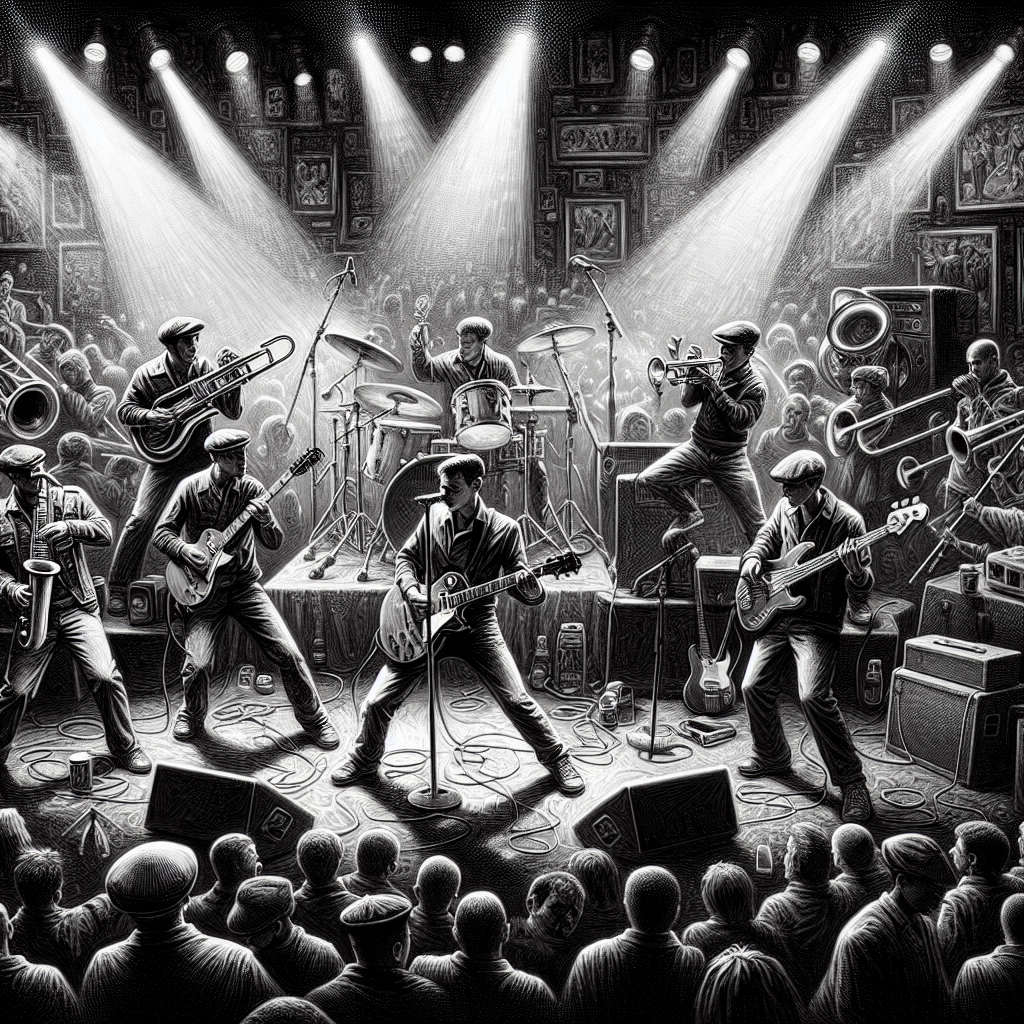-
Table of Contents
- Ska-Punk: The High-Energy Fusion of Ska and Punk
- Top 5 Tips for Understanding Ska-Punk
- Origins of Ska-Punk
- The Evolution of Ska
- The Rise of Punk Rock
- Characteristics of Ska-Punk
- Influential Ska-Punk Bands
- The Mighty Mighty Bosstones
- Reel Big Fish
- Cultural Impact of Ska-Punk
- Fashion and Style
- Social Movements
- Conclusion
“`html
Ska-Punk: The High-Energy Fusion of Ska and Punk

Ska-punk is a vibrant and energetic genre that combines the upbeat rhythms of ska with the raw intensity of punk rock. This fusion has captivated audiences worldwide, offering a unique sound that is both danceable and rebellious. In this article, we explore the origins, characteristics, and cultural impact of ska-punk, providing insights and examples that highlight its significance in the music world.
Top 5 Tips for Understanding Ska-Punk
- Recognize the roots: Understand the historical context of ska and punk.
- Identify key characteristics: Look for the blend of ska’s brass instruments with punk’s fast-paced guitar riffs.
- Explore influential bands: Listen to bands like The Mighty Mighty Bosstones and Reel Big Fish.
- Appreciate the cultural impact: Consider how ska-punk has influenced fashion and social movements.
- Engage with the community: Attend live shows to experience the genre’s energy firsthand.
Origins of Ska-Punk
The roots of ska-punk can be traced back to the late 1970s and early 1980s, when musicians began experimenting with the fusion of ska and punk. Ska originated in Jamaica in the late 1950s, characterized by its walking bass lines and offbeat rhythms. Punk rock, on the other hand, emerged in the mid-1970s in the United States and the United Kingdom, known for its fast tempos and aggressive sound.
The Evolution of Ska
Ska music evolved through several waves, each bringing new influences and styles. The first wave was the original Jamaican ska, followed by the second wave, known as 2 Tone, which emerged in the UK in the late 1970s. This wave incorporated elements of punk rock, setting the stage for the development of ska-punk.
The Rise of Punk Rock
Punk rock’s rise in the 1970s was marked by its DIY ethos and anti-establishment attitude. Bands like The Ramones and The Sex Pistols became icons of the genre, influencing countless musicians and leading to the creation of subgenres, including ska-punk.
Characteristics of Ska-Punk
Ska-punk is defined by its energetic blend of ska’s upbeat rhythms and punk’s fast-paced, aggressive sound. Key characteristics include:
- Instrumentation: Ska-punk bands often feature brass instruments like trumpets and trombones, alongside traditional rock instruments such as guitars, bass, and drums.
- Rhythmic Patterns: The genre combines ska’s offbeat rhythms with punk’s driving beats, creating a unique and danceable sound.
- Lyrical Themes: Ska-punk lyrics often address social and political issues, reflecting the rebellious nature of punk rock.
Influential Ska-Punk Bands
Several bands have played a pivotal role in popularizing ska-punk, each bringing their unique style to the genre.
The Mighty Mighty Bosstones
Formed in 1983, The Mighty Mighty Bosstones are often credited with pioneering the ska-punk sound. Their 1997 hit “The Impression That I Get” brought mainstream attention to the genre, showcasing their signature blend of ska rhythms and punk energy.
Reel Big Fish
Reel Big Fish emerged in the mid-1990s as part of the third wave of ska. Known for their humorous lyrics and high-energy performances, they gained popularity with songs like “Sell Out” and “Beer.”
Cultural Impact of Ska-Punk
Ska-punk has had a significant cultural impact, influencing fashion, social movements, and the music industry as a whole.
Fashion and Style
The ska-punk scene is known for its distinctive fashion, which often includes elements of both ska and punk styles. This includes checkerboard patterns, band t-shirts, and Doc Martens boots.
Social Movements
Ska-punk has been associated with various social and political movements, using music as a platform to address issues such as inequality and injustice. The genre’s inclusive and community-oriented ethos has resonated with fans worldwide.
Conclusion
Ska-punk is a dynamic and influential genre that continues to captivate audiences with its high-energy fusion of ska and punk. By understanding its origins, characteristics, and cultural impact, we can appreciate the unique sound and spirit that define ska-punk. Whether you’re a longtime fan or new to the genre, exploring ska-punk offers a glimpse into a vibrant musical world that is both entertaining and thought-provoking.
For more information on ska and punk rock, you can visit Wikipedia’s Ska page.
“`




